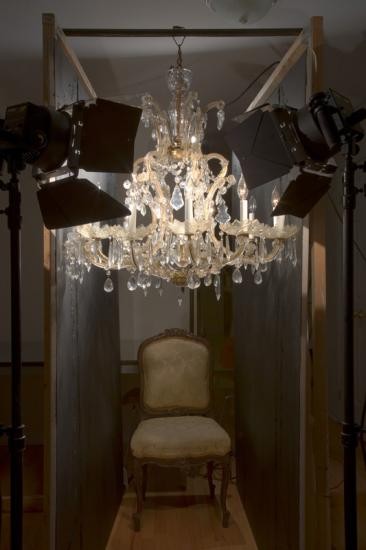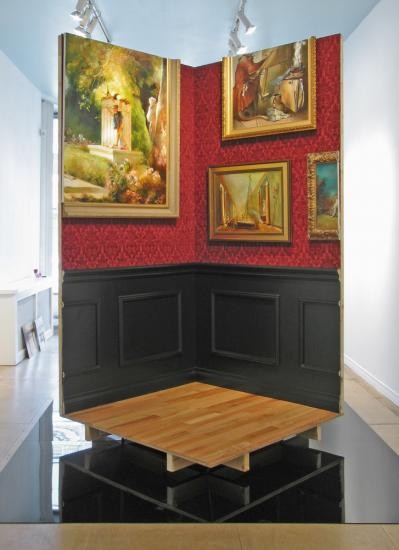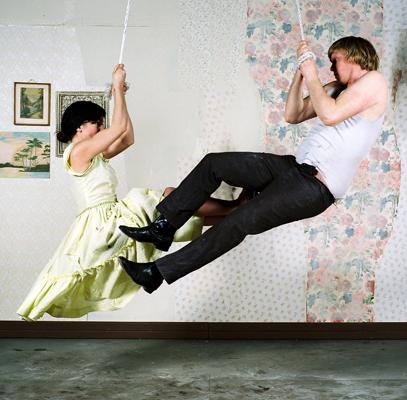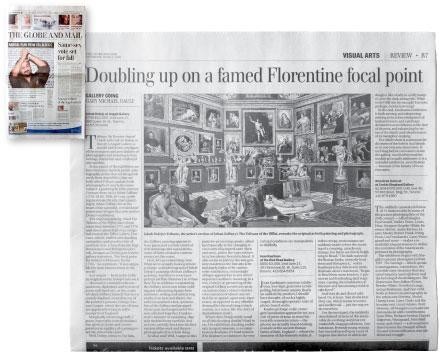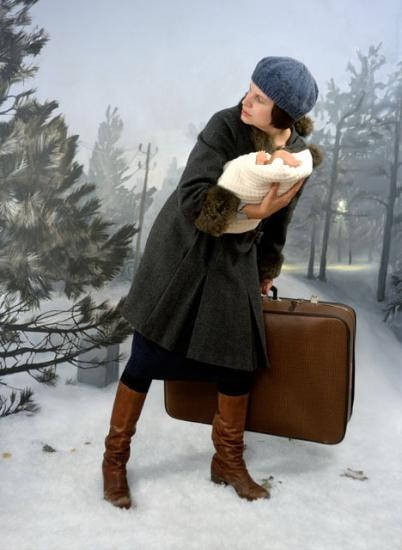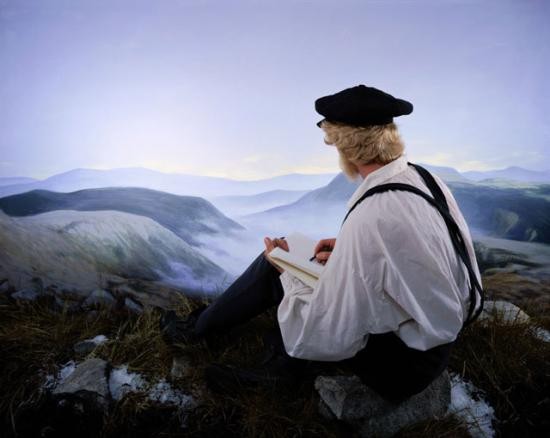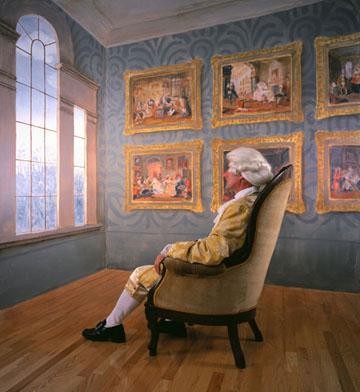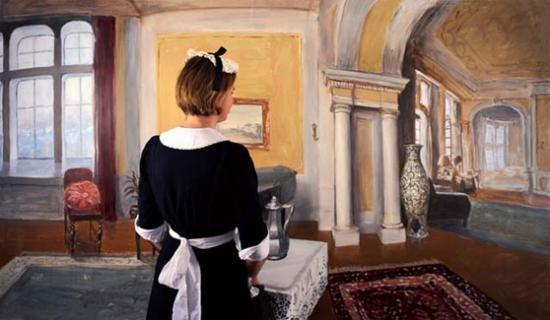Peter Goddard, The Toronto Star
Growing up in Prague, Jakub Dolejs was used to rubbing shoulders with history, whether that meant the 14th-century Gothic style found in the Cathedral of St. Vitus or the 17th-century Baroque of the Czernin Palace.
"When I was just 10, I knew the difference between the Renaissance and the Baroque," he says.
"It was first-hand. I lived it. It wasn't until I moved to Canada that I began to imagine this old history."
With Mirabilia, a limited-edition book launched at the Angell Gallery earlier this week, Dolejs's historically inflected imagination goes into a time warp in warp drive. About as thick as a vintage double-LP compilation, the 36-page Mirabilia nevertheless has enough going on between its Vegas-like gold covers to bulk up a university textbook.
Its subject is certainly textbook-worthy - history as transcribed by photography and painting in their divergent, even contradictory ways.
"Photography records history in one way and painting records it in another," writes the Norwich Gallery's Lynda Morris in her incisive essay included in Mirabilia. North America's history has been recorded mechanically by photography. "Europe's history has been recorded in handmade images," says the British curator.
With Dolejs we find an artist whose life represents a meeting place for the two histories, and who understands how photography can fiddle with how painting is perceived - and vice-versa.
He himself paints and photographs with equal ease. In past shows, the 31-year-old Toronto artist has photographed theatrically staged tableaux of historical settings, for which he's painted the backdrop.
At Angell Gallery three years back, his Casa Loma - Toronto's Castle, 1917 (2002), presented a carefully staged portrait of old WASP Toronto, where grime and poverty existed somewhere else. But the dumbfounded maid shown staring at the luxury is clearly seeing it from our 21st-century point of view.
Every new, modern intrusion into history leaves its mark on that history, is the point here. Traces of the new will never be erased from the old.
Casa Loma is child's play compared to the demands made by Mirabilia, designed in a surprisingly conventional manner by Sandra Friesen.
(Mirabilia is not really for buyers seeking slick Christmas coffee table gift books for their special someones, but rather for those looking for an art piece in its own right.)
At its most basic, Mirabilia is Dolejs's painting/photo remix of a gossipy 18th-century painting, The Tribuna of the Uffizi (1772- 1778) by British society painter Johann Zoffany. The painting shows an ornate salon simply packed with paintings and sculpture, and notables looking at both.
The German-born Zoffany was desperate to win the approval of his newfound masters. His metier was conversation portraits, where the well-connected were depicted among their own kind in the comforts of the great homes and clubs.
Tribuna shows a well-heeled crowd of gentry, nobility and assorted English collectors, including the Third Earl Cowper, taking the Grand Tour of Europe, gawking at art in the Uffizi Gallery in Florence.
What particularly piqued Dolejs's interest in the painting was the evidence it provides of art consumerism of the period.
"It was a time when the court system was still going strong," says the photographer/painter, "but it also was a time when global trading had started. A lot of references (in the original) portray consumerism in a not very favourable light."
In the Dolejs remix of the Zoffany work, a photo of the Uffizi original gets chopped, cropped and reworked. There are small, byte- size samples. There's a heftier - the club-mix version maybe? - two- page photo taken of the painting Dolejs made in his Paris studio of the small model he constructed of the original Tribuna painting. There's also what Dolejs calls his "Louvre Remix," photo, where he's replaced paintings shown in Tribuna with those from the vast Louvre collection in Paris. (Dolejs had an artist residency in Paris earlier this year.)
Things only start to get interesting at this point. Mirabilia has a photograph of the Tribuna as it now appears in the Uffizi, as well as photographs of a French replication of the room, not the works, established at the Chateau de Chantilly.
Further complicating this hall-of-mirrors effect, there are the artist's paintings of a photo of the original Tribuna gallery - although he has never stepped foot inside the Italian gallery - as well as his paintings of the Chantilly replica.
If nothing else, Zoffany was a terrific technician with a terrific ego. His copies of famous pieces such as Correggio's Virgin and Child made Tribuna a superb form of self-advertisement. Still, King George III loved Zoffany's stuff and boosted the painter's reputation for a time.
For his part, Dolejs insists he wasn't trying to out-Zoffany, Zoffany. "It's not to show off technique," says Dolejs. "If you look at my paintings (of the original works), you can see they're really often rough work."
It would seem Dolejs is merely following in that great Canadian tradition of giveaway trompe l'oeil photography from Rodney Graham or Carlos and Jason Sanchez brothers of Montreal, wherein the photograph allows us in on the chicanery that went into its production.
"People like to have it revealed how they're being tricked," he says.
Jakub Dolejs's Mirabilia is available for $40 at Angell Gallery, 890 Queen St. W., by phone at 416-530-0444 or at info @ angellgallery.com.

